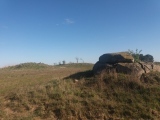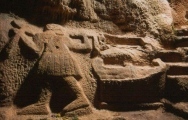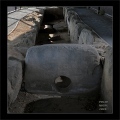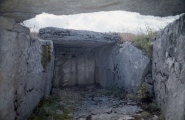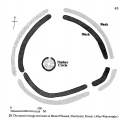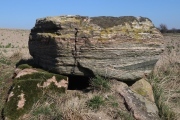Andy Burnham's Blog, page 200
April 20, 2020
Ōyu
BBC Radio 3: Susan Greaney from English Heritage draws parallels between the Neolithic peoples of Britain and the ancient Jomon civilisation of Japan, both of whom used circles of stone in ritual celebrations. Follow the comments on our page to listen. The best-known stone circle in Japan. Actually two circles including some sundial monuments, Manza circle (west, 48m in diameter) and Nonakadō circle(east, 42m in diameter), placed either side across a road. There is a good museum nearby.
Published on April 20, 2020 13:58
Swinside
Apparently this stone is made of porphyritic slate. I just thought it was gneiss. (groan). A wonderfully atmospheric stone circle in Cumbria, often surrounded by mist and quite remote, apart from the farm. The circle is unspoilt and complete. 27 metres across and containing 55 stones - the walk is worth it.
Published on April 20, 2020 12:40
Schwaneberg Dolmen
A burial chamber in Brandenburg, Berlin. The chamber measures 2.5m by 1m and is aligned north east to south west. Four burial mounds probably from the Bronze Age are right next to the Schwaneberg Dolmen. These are pictured, and see our nearby sites list below for more.
Published on April 20, 2020 12:34
Cave of Nympholyptou
. The cave of Nympholyptou in Attica was dedicated to Nymphs, Rhea (Mother Earth) and Pan. The caves were considered the womb of Gaia. According to Hellenic myth, when Zeus overthrew his father Cronos, he let his mother Rhea to go where she pleased. She, with the Korybantes went to Kybela mountain of Phrygia in Asia Minor. Since then, Rhea was named Kybele and she is usually represented sitting on a throne. The Nymphs, the daughters of Gaia, were the guardians of springs, forests and mountains. There used to be a spring in the cave, but with the destruction of the forest, it has dried up.
Published on April 20, 2020 11:00
April 14, 2020
Züschen Galeriegrab
A chambered tomb in Hesse, 20 meters long by 2.5 meters wide with a 'soul hole', but no capstones, discovered in 1894 in fields as stones got in the way of ploughing. There are carvings like cups and fishbones on the North End (see new photos on our page). It is now covered by a wooden protective structure with metal bars.
Published on April 14, 2020 12:22
April 13, 2020
La Baraque de l'Estrade
Further along the D.35 from Montmirat, just before the junction with the D.31, a decent sized tumulus can be seen in the fields on the left, about 80 metres from the road. The mound is oval, about 15m by 12m and up to 2m high. In the centre of this is a sort of double dolmen, with two joined chambers, each having two side slabs and a capstone. The western of the two has a backstone, while the eastern has a drystone walled end.
Published on April 13, 2020 05:29
April 11, 2020
Mount Pleasant (Dorset)
For the last several years Doug Rocks MacQueen has been relentlessly recording papers presented at various archaeology conferences. There are many hundreds now to choose from. Don't be put off by the academic jargon, there's some fascinating stuff here. See below, and more of my prehistory picks are in our forum. Henge, Barrows and Timber circle in Dorset. Conquer Barrow sits in the extreme west side of the field containing Mount Pleasant henge and overlies the henge earthworks on the western side. Quoting Martyn Barber, Historic England Aerial survey: "Three barrows were already known - the massive Conquer Barrow, which either sits on the henge's western bank or was already standing and incorporated within the henge bank when the latter was built, is the most obvious. The remains of two more normally proportioned mounds lie to the south-east of the henge."
Published on April 11, 2020 12:04
Dwarf of Dobice
This locally well known and popular granite monument called Muík can be found in the forest north from the little village of Dobice, Bohemia. This slender stone is about 1.5m tall and is situated just a few steps from the main tourist trail. It is said that when it is lit by the sun rays from a specific angle, the shadow creates the appearance of a dwarf. This is how the stone got its name.
Published on April 11, 2020 10:49
April 9, 2020
Snertinge Runddysse
Published on April 09, 2020 06:10
April 8, 2020
King Stone (Kingston-upon-Thames)
Kingston upon Thames: the Coronation Stone, and digging a bit deeper to get past the nonsense, also Where England Began, and bad history for good (and not-so-good) causes? both by Robert J S Briggs. A long and interesting read, linked from the comments on our page.. Stone in Kingston-upon-Thames, Surrey / SW London. Supposedly used as the Coronation Stone for West Saxon kings in the 10th Century. In 2017 Kingston Council was considering an option of re-siting the coronation stone from the Guildhall's frontage back to its original location within the churchyard of Kingston's old parish church, All Saints Church. This appears to have fallen through.
Published on April 08, 2020 16:06



